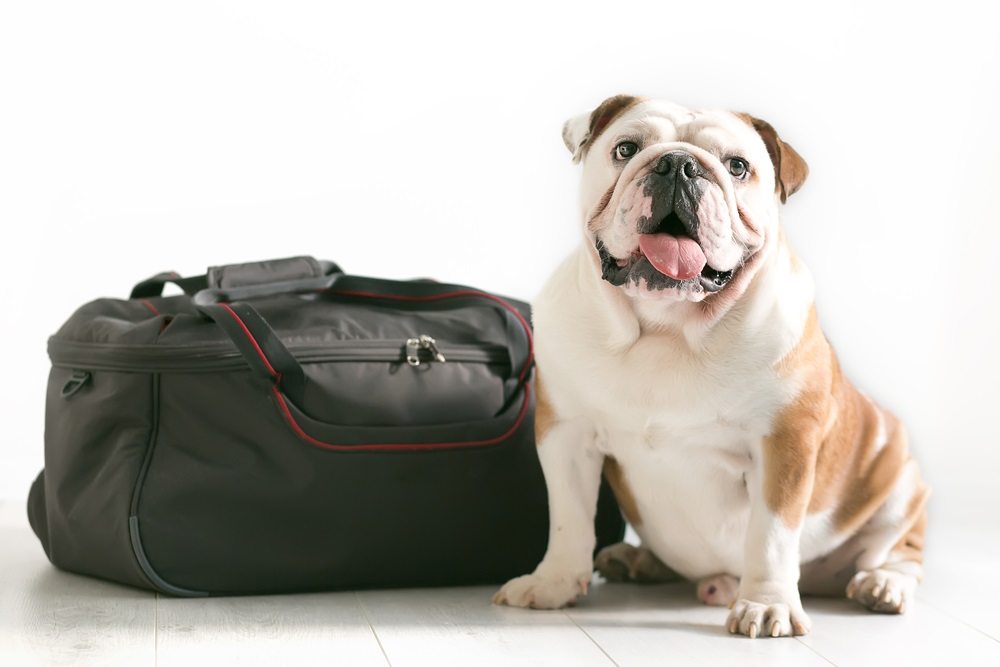Have Pets, Will Plan
 Emergency preps for your pet, how do you plan for that emergency situation when you share your life with pets? Whether you have one small pet or several, gathering your supplies last minute might prove difficult or impossible. Many people have a disaster plan for the family. Don’t forget the fur and feather kids.
Emergency preps for your pet, how do you plan for that emergency situation when you share your life with pets? Whether you have one small pet or several, gathering your supplies last minute might prove difficult or impossible. Many people have a disaster plan for the family. Don’t forget the fur and feather kids.
Emergency Preps for Pets, What to Consider
Preparing for a hurricane, flood, fire or other emergency depends a bit on what type of pet you have. However, the basics are the same for all. Just as Weather.gov reminds us to have several days supplies for the family, so should you include your pets needs. Our list for pets includes:
-
Food for at least a week, preferably longer.
- If you feed canned, remember that manual can opener. For those that feed homecooked or frozen foods, it might prove beneficial to find a dehydrated or dry version that your pet eats. Or, consider canned food as your emergency pet food. Often during storms and for a time after, refrigeration and cooking options are limited or non-existent. Planning ahead ensures your pet remains well fed and healthy. For all pets, including those seed and pellet eating feather friends, ensure you keep at least a couple of week’s supplies on hand at all times. Even when stores reopen, food supplies might be limited. Moreover, water and mold often damage food supplies in your home and in stores. Make sure yours are stored in a water tight container. Plan ahead.
-
Water for your pets.
- Again, plan several days of fresh drinking water for your pets. While pets, like humans, can live a short time without food, water is critical to survival.
-
Clean up needs.
- Whether your pet is caged or roams your home, clean-up supplies prove necessary. Plan extra garbage bags, paper towels, bedding, and cleaning solutions. Extra pet blankets offer a bit of help, too, just in case.
-
Toys and chews.
- Families plan for toys and games for children; our pets need these, too. Favorite stuffies, chew toys, and other familiar pet toys calm your pet while entertaining him.
-
 Identification, critical to your pet and you
Identification, critical to your pet and youIdentification. Tags, tattoos, and microchips provide an added layer of protection, in case your pet is separated from you. Consider how best to identify your pet and ensure you keep the documentation safe, too. Additionally, take a current photo of your pet. Should you get separated, a photo and id information helps ensure you are reunited.
-
Paperwork.
- Gather vaccination records, health papers, registration papers, and other documents important to your pet. Put these in a safe place with your family’s paperwork.
-
First-Aid and medicines your pet requires.
- While he might be quite healthy now, basic first-aid supplies ensure that you will manage problems that might happen. These include scissors, bandages, peroxide, alcohol, and tweezers. Your pet might require others, too.
-
A plan of action.
- Actually, you will need two plans, one for evacuation, the other for staying. Know where you will go and what their rules for pets include. Prepare for all these, even if you believe you are staying at home. Things change, often abruptly. Better prepared than caught off guard. Also, remember that many emergency shelters do not allow pets. If you must evacuate, where will you go? Will your pet accompany you? Planning ahead enables you to avoid abrupt last-minute decisions.
-
Crates, leashes, harnesses.
- Plan extras, should the need arise. Secure pet id to each.
-
Pooper-scooper.
- Caged pets such as rabbits and guinea pigs enjoy the comfort and safety of containment in cages throughout. You might even provide a night cover to help keep them calm. Cats continue to use their litter boxes. However, what about your pet dog? A small dog may find using papers or pads easy. Just find a safe place to call the new potty place and you are set. Your Great Dane or Collie might not be as comfortable using these options. However, during the storm, options are limited. Plan ahead for an appropriate potty place and proper cleanup. Remember, some storms and aftermath may keep you inside for days.
-
Plan for after the storm, too.
- Hurricanes, for instance, often leave standing water that may include bacteria, debris, and snakes. Moreover, displaced wild animals may arrive at your front door. Plan for a dry area to safely exercise your pet. Be alert for new problems.
-
Activity planning.
- An active dog, accustomed to playing ball outside or long walks, may feel more anxious and closed in. How will you address this? Plan inside activities where possible. Teach your pet to relax, even when energy is high. Our next point will help, too.
-
Soft music helps subdue.
- Consider recording on a battery-operated player for use during the storm. We use music when we leave our pets for short times. They become accustomed to the calm peace music brings and relax.
-
Calm attitude.
- When your emergency preps are complete, it’s easier to remain calm, even in a storm. Your pet, like children, adapts to your attitude. However uncertain you may feel, ensure that your pet knows you are confident that all will be well. Stress creates attitude and health problems that a calm, confident attitude overcomes.
Emergency Preps Help Prevent Disasters
Most storms will not require you to fully utilize your emergency preps. However, fully prepared gives you peace of mind. Moreover, as any storm passes, you enjoy time with your pets, fully confident of safety. Having a plan and a backup plan offers you the best chance of weathering the storm safely with your pet.




